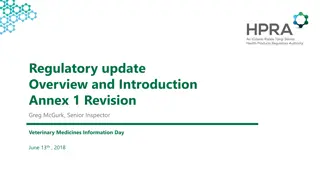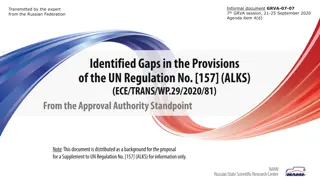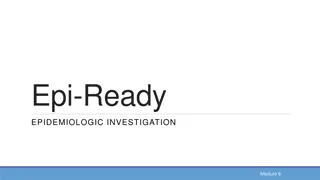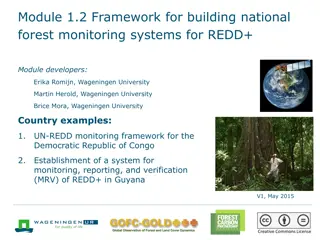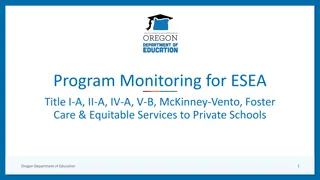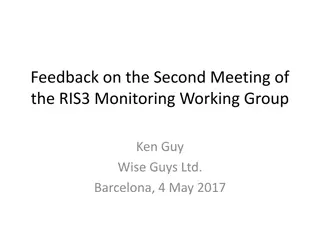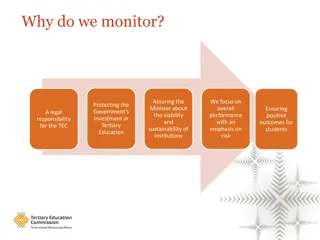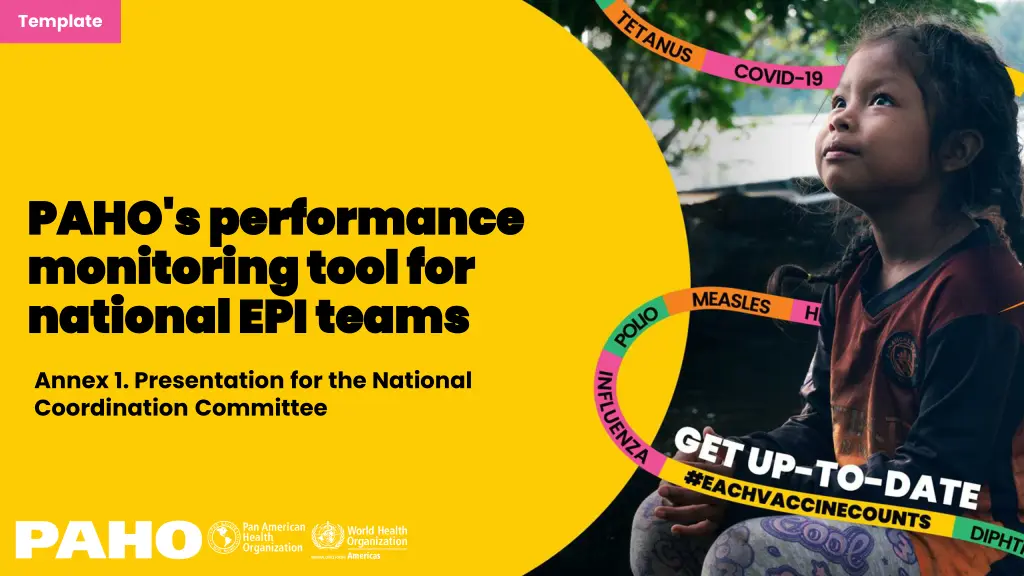
Enhancing National EPI Team Performance Monitoring Tool
Explore a comprehensive performance monitoring tool by PAHO for national EPI teams, enabling self-assessment across 13 components to identify successes, gaps, and priorities for program improvement at both national and sub-national levels.
Download Presentation

Please find below an Image/Link to download the presentation.
The content on the website is provided AS IS for your information and personal use only. It may not be sold, licensed, or shared on other websites without obtaining consent from the author. If you encounter any issues during the download, it is possible that the publisher has removed the file from their server.
You are allowed to download the files provided on this website for personal or commercial use, subject to the condition that they are used lawfully. All files are the property of their respective owners.
The content on the website is provided AS IS for your information and personal use only. It may not be sold, licensed, or shared on other websites without obtaining consent from the author.
E N D
Presentation Transcript
Template PAHO's performance PAHO's performance monitoring tool for monitoring tool for national EPI teams national EPI teams Annex 1. Presentation for the National Coordination Committee
Agenda Agenda Current status of immunization Aim and objective of the tool Different parts of the tool Rating questions on a maturity scale Key points to consider Guide to conducting the assessment Expected outputs
Current status of Immunization in Country Current status of Immunization in Country xxx xxx DTP3 coverage rates, Country xxx 96% -17% Multiple factors have changed since the last EPI evaluation COVID-19 pandemic 79% Introduction of the _ vaccine Government structure The health system s legal framework 2012 2022 Source:https://immunizationdata.who.int/compare.html?COMPARISON=type1__WIISE/MT_AD_COV_LONG+type2__WIISE/MT_AD_COV_LONG+option1__ DTP_coverage+option2__DTP_PLUS_coverage&CODE=GTM+PER&YEAR=
The tools objective is to The tool s objective is to Self-assess performance of the national immunization program in the country across 13 EPI components using a comprehensive performance management tool to identify successes and gaps and set priorities for the program
And it aims to And it aims to To self-assess the performance of each component of EPI (as shown in the diagram) Develop a national action plan for the improvement of EPI and to: Prioritize the recommendations that require immediate intervention Define the timeline for activities and budget required. Determine if further assessment or support is required to address gaps in a specific component.
Purpose of the tool at the sub Purpose of the tool at the sub- -national and local level local level national and This tool aims to self assess the performance of national EPI and identify achievements and gaps in the program and promote improvement At the sub-national and local level, the tool serves as means to validate the claims made at the national level It allows to review local implementation, helping to confirm and supplement the national-level findings The scores generated at the sub-national and local level do not contribute to the final assessment. They play a crucial role in informing and refining the national-level score by providing a more granular understanding of the program's performance
The tool has different four main parts to it The tool has different four main parts to it 2. Five-point maturity scale 1. Questions 3. National/sub national level 4. Sub sections
And a total of And a total of 196 questions across all components: 109 at the national level 67 at the subnational level 20 at the local level
The five-point scale helps to assess maturity across each question LEVEL 3: DEFINED The available elements are implemented with the functionality of a routine system. Biases or problems are not recognized. LEVEL 5: OPTIMIZED LEVEL 1: INITIAL All elements are available, reliable, complete, up-to-date and implemented in a standardized and efficient way. Insufficient or unavailable elements. 1 2 3 4 5 LEVEL 2: MANAGED The available elements present problems of completeness, updating, their use is not appropriate. LEVEL 4: QUANTITATIVELY MANAGED All items are available, reliable, complete, up-to-date. And some biases/problems are known that can be improved.
There are four key points to consider when conducting the self-assessment The tool is self-administered by the country PAHO CIM advisors only provide support and technical clarifications. They do not provide recommendations to select a final rating The tool is designed for self-assessment EPI and promoting improvement in the program. It is not intended to evaluate or pass judgment on the country's performance. The maturity scale rating is not the primary focus; identifying the underlying causes of bottlenecks and achievements is what will aid the country's improvement.
The self The self- -assessment will be implemented in three assessment will be implemented in three phases phases Phase 1: Preparation 1. Nominate and onboard the members of the National Coordination Committee (NCT), with the PAHO consultant and the CIM focal point from the PAHO Country Office acting as secretariat 4. Review and match relevant documents to questions on the tool 5. Fill out the EPI situation analysis report to provide an overview of existing situation of EPI in the country 2. Draft and estimated budget for the EPI self assessment and finalize a date to conduct it 6.Present final situation analysis report to National EPI and PAHO 3. Conduct desk review by reaching out to stakeholders from different departments of EPI collecting relevant documents from the last 5 years 7. Prepare a situation analysis presentation based on the report 8. Adapt the self-assessment tool to the country context
The self The self- -assessment will be implemented in three assessment will be implemented in three phases phases Phase 2a: Implementation at sub-national and local level 1. Select three sub-national areas where the self-assessment can be conducted 1. Review components 2-13 with the sub- national level participants on the excel version of the tool. 2. Select three health facilities in each sub- national area for the field visit 2. Score each question and write brief notes detailing the reasons behind the scoring 3. Coordinate with the EPI officers of the three sub-national areas to gauge willingness to receive the field visits 3. Conduct field visit to self-assess component 14 4. Finalize dates of the field visits 4. Compile the scores for each question at the sub-national and local level into a single excel version of the tool. These findings will be used to inform the national-level self-assessment 5. Identify 1-2 persons from the national level to travel to the sub-national level to support the implementation of the assessment Note: It is at the sub-national level's discretion to determine how many sub-national levels and health facilities can be visited
The self The self- -assessment will be implemented in three assessment will be implemented in three phases phases Phase 2b: Implementation at national level 1. Schedule the national-level self- assessment over five days - each component will be reviewed in a separate workshop 1. Conduct each workshop by engaging in discussions around the scoring for each question. Enrich the discussion by drawing on scoring and discussion points from the sub-national self-assessment 2. Identify participants to invite to each workshop and establish Workshop Facilitation Teams to lead the sessions 2. Conduct a debrief session with workshop facilitation teams and consolidate scores from each workshop into one excel file by the end of each day 3. Conduct a simulation activity for the Workshop Facilitation Team to prepare for leading the workshops 3. Host a closing ceremony and summarize the key findings from the workshops 4. Host an opening ceremony to introduce the tool to all participants
The self The self- -assessment will be implemented in three assessment will be implemented in three phases phases Phase 3: Follow up Finalize scores for each component using only the national level scores (for countries where national level assessment happens before the sub-national assessment, finalize scores for each question after reviewing sub-national scores first. If there is a major discrepancy between the two, discuss the final national level score with NCT and include this insight in the final report) 1. 4. Since finalizing the action plan may take a while, prioritize the identification of actions that can be implemented immediately 4. Present the final report with immediate actions to be taken to the national authorities 1. Develop a final report based on insights and notes from the workshops 4. Develop an action plan for priority areas using actions discussed in the workshops 1. Identify priority areas from the different components for the country 4. Present action plan to national authorities for approval 4. Implement the action plan
This self assessment will yield five main outputs 1 Desk review: To gather data on the performance of each component of the EPI over the last 5 years. 2 Situation analysis: To provide a situation overview of EPI before the self-assessment is conducted 3 Performance Monitoring Tool: Self-administered at the national and sub-national level and through field visits at the local level 4 Final report and presentation: Description of the current status of each EPI components and recommendations. 5 Action plan A plan to close the most urgent gaps of the national EPI.






